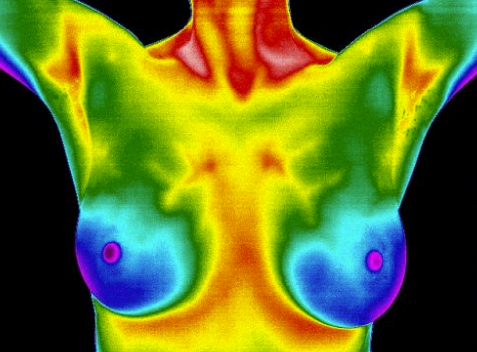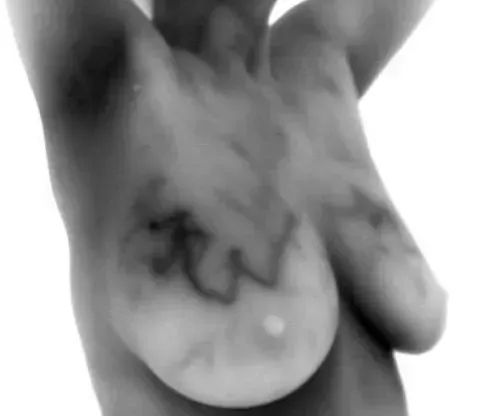Breast Thermography
Safe, Comfortable Screening
Gentle, Non-Invasive Imaging for Breast Health
Breast thermography is a safe, contact-free imaging method that has been FDA 510(k) cleared since 1982 as an adjunctive tool for breast health screenings. Using a medical-grade infrared camera, it captures temperature variations and vascular patterns on the skin’s surface, providing valuable insight into underlying physiological changes.
Appropriate for women of all ages, thermography is especially beneficial for those with dense breast tissue (affecting up to 60% of women). Because it involves no compression or radiation, it offers a comfortable, repeatable way to monitor breast health over time.
Why Thermography Matters
Enhancing Early Detection
Mammography remains an important screening tool, but it can be less effective in dense breast tissue where abnormalities are more easily hidden. Thermography, by contrast, detects vascular and temperature changes that may signal early abnormal activity, even when structural imaging appears normal.
It's also ideal for younger women, who may not meet age guidelines for mammography. Though breast cancer is less common before age 45, it can be more aggressive; thermography provides a safe, preventative option for early screening and awareness.


Tumor Neoangiogenesis

Blood Vessel Activity
How It Works
Imaging That Reveals What the Eye Can’t See
Thermography identifies vascular and heat variations that may indicate early physiological imbalance. Cancer cells require additional nutrients, stimulating new blood vessel growth (neoangiogenesis) which produces temperature differences detectable through infrared imaging.
These variations are analyzed to create a detailed thermal map, offering a deeper view of your breast health which can reveal physiological changes that might otherwise go unnoticed.
A Valuable Part of Your Wellness Routine
Insightful Screening for Informed Decisions
While no screening method can prevent breast cancer, early detection remains the best defense. Thermography can complement imaging tools such as mammography and ultrasound by adding another layer of insight into your body's natural physiology, without compression, contact, or exposure.
For women with dense breast tissue, younger women, those who are pregnant, or anyone seeking a gentle, radiation-free approach, thermography fills an important gap in proactive breast care.
Take the Next Step
Empower Yourself with Knowledge and Clarity
Adding breast thermography to your wellness plan gives you more information, more options, and greater peace of mind. With expert interpretation, flexible scheduling, and a comfortable, supportive environment, CT Thermography is here to help you take charge of your breast health.
Breast Thermography Screening – $325
This screening consists of 6 images of the breasts and axillary regions, taken from anterior, oblique, lateral, and inferior angles.



